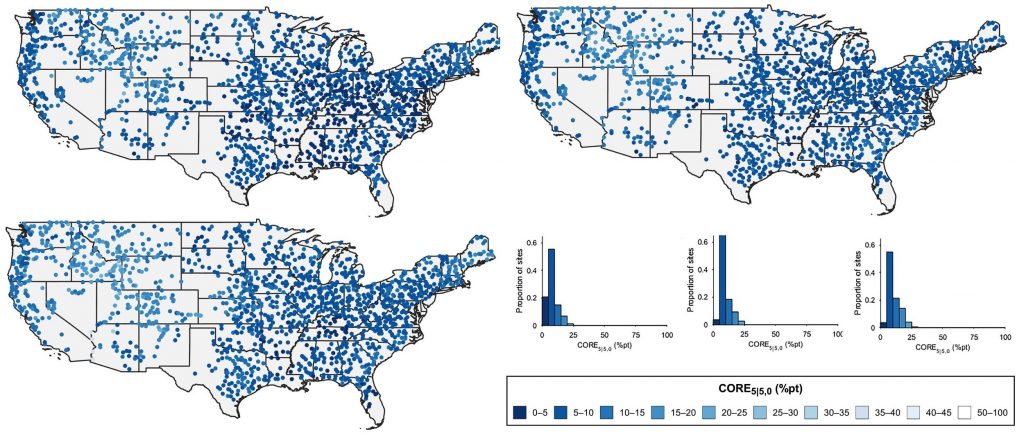In this paper we explore the applicability of global hydrological models to the problem of defining spatial correlation between catchments at the global scale.
Global flood models integrate flood maps of constant probability in space, ignoring the correlation between sites and thus potentially misestimating the risk posed by extreme events.
Stochastic flood models alleviate this issue through the simulation of flood events with a realistic spatial structure, yet their proliferation at large scales has historically been inhibited by data quality and computer availability. In this paper, we show, for the first time, the efficacy of modeled river discharge reanalyses in the characterization of flood spatial dependence in the absence of a dense stream gauge network. While global hydrological models may show poor correspondence with absolute observed river flows, we find that the rate at which they can simulate the joint occurrence of relative flow exceedances at two given locations is broadly similar to when a gauge-based statistical model is used.
Evidenced over the United States, flood events simulated using observed gauge data from the U.S. Geological Survey versus those generated using modeled streamflows have similar (i) distributions of site-to-site correlation strength, (ii) relationships between event size and return period, and, importantly, (iii) loss distributions when incorporated into a continental-scale flood risk model. Extremal dependence is generally quantified less accurately on larger rivers, in arid climates, in mountainous terrain, and for the rarest high-magnitude events. However, local-scale errors are shown to broadly cancel each other out when combined, producing an unbiased flood spatial dependence model. These findings suggest that building accurate stochastic flood models worldwide may no longer be a distant aspiration.






